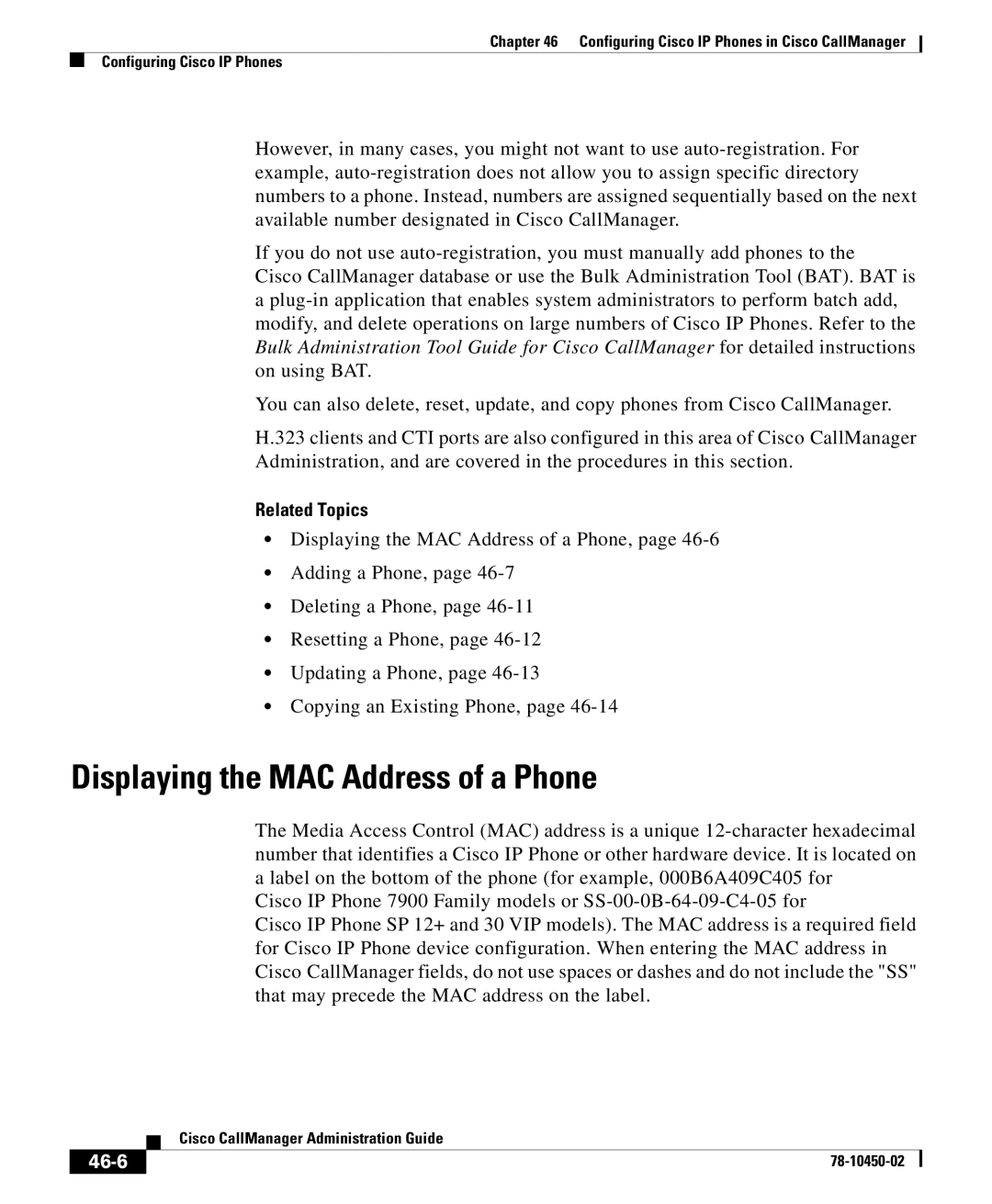
Chapter 46 Configuring Cisco IP Phones in Cisco CallManager
Configuring Cisco IP Phones
However, in many cases, you might not want to use
If you do not use
Cisco CallManager database or use the Bulk Administration Tool (BAT). BAT is a
You can also delete, reset, update, and copy phones from Cisco CallManager.
H.323 clients and CTI ports are also configured in this area of Cisco CallManager Administration, and are covered in the procedures in this section.
Related Topics
•Displaying the MAC Address of a Phone, page
•Adding a Phone, page
•Deleting a Phone, page
•Resetting a Phone, page
•Updating a Phone, page
•Copying an Existing Phone, page
Displaying the MAC Address of a Phone
The Media Access Control (MAC) address is a unique
Cisco IP Phone 7900 Family models or
Cisco IP Phone SP 12+ and 30 VIP models). The MAC address is a required field for Cisco IP Phone device configuration. When entering the MAC address in Cisco CallManager fields, do not use spaces or dashes and do not include the "SS" that may precede the MAC address on the label.
| Cisco CallManager Administration Guide |
|
